What We Think When We Think About (Interpersonal) Violence
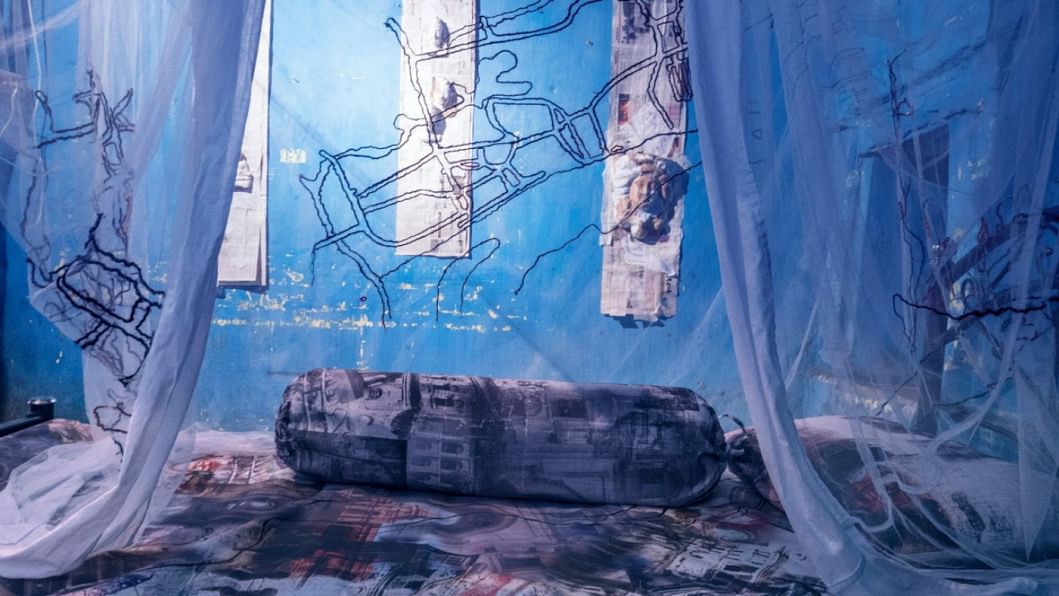
Transnational feminists have been saying for decades now: interpersonal violence is structurally produced. The interlocking systems of patriarchy and heteropatriarchy, capitalism, classism, colonialism, and global racism are "reconstitutive" (to use the term Kimberlé Crenshaw used on Twitter to explain intersectionality), structuring personal lives (often) by the use of violence or threat of violence. Yet, too often, interpersonal violence, particularly of the sexual kind, is understood as acts of "monsters" who take advantage of women that they have power over – minimising what the #metoo movement has revealed: that sexual violence is deeply pervasive and affect individuals across race, class, gender, sexuality barriers. Indeed, a large body of scholarship view violence as (only) individual enactments and experiences of oppression, which can ostensibly be fixed by treating the individuals involved. In this article, I discuss the confluence of reasons for which the link between the structural and personal is continually at risk of getting obscured in favour of an individualist reading of interpersonal violence.
Let me begin with what I see as a cautionary warning from Laina Bay-Cheng about the construction of victimhood vs. agency: "Sexuality researchers often register behaviours as "agentic" only when they are readily recognisable acts of self-interest (e.g., insisting on condom use) and self-expression (e.g., initiating a desired interaction, refusing an undesired one)." This means those who are "pathetically under the control of others or shamefully out of control of themselves" are seen as victims, making them perfect recipients of civilising state interventions that becomes modes of control. This warning must be heeded by those of us who research women's subjugation in intimate relationships. Most researchers of violence in intimate spaces focus on women's victimhood, drawing attention to the very many ways that women's lives are worsened when they experience violence, as they suggest legal, therapeutic, behavioural, educational, and literacy-based interventions to "empower" them individually and through the courts and the criminal justice system. That the criminal justice system is another location of violence (that is racist, sexist, classist, ableist) is sidelined in favour of the idea that the criminal justice system provides safety because it makes people feel secure, even when it does little to reduce either violence or the harm that violence produces. It is then women who participate in these interventions, e.g., by seeking help from social services, medical professionals, and law enforcement, who are seen as agentic, while those who do not are constructed as victims.
STRUCTURAL PRODUCTION OF VIOLENCE
Scholar-activists such as Kimberlé Crenshaw have shown how race, gender, class, and other social locations intersect to create unique experiences of oppression for minoritised groups. Her work documents that violence against women is not homogeneous, and it is not class and race-neutral, highlighting that the systems of capitalism, patriarchy and racism engender the many forms of violence that women experience in all locations: in private, in public, and in between, primarily by men. Researchers further suggest that structural factors are critical to creating and deepening, and maintaining violence in the institutions of home, school, work, and public space. Meanwhile, certain forms of violence, such as partner violence, occur across class lines. Indeed, poverty and socioeconomics should not be seen as deterministic—it is not that the poorest of the poor are at the highest odds of experiencing partner violence. However, that class oppression intersects with (hetero)sexism and other forms of discrimination to produce and maintain partner violence, such as through discriminatory housing and employment practices, prevent women from accessing help-seeking resources.
As legible as the structural producers of violence are, much of the intervention in this domain is at the individual level. Those who experience violence are met with individualised treatments that are often disempowering. In particular, redress happens through the medicalisation of violence and/or via the criminal justice system and the courts. However, global racist and sexist practices of the criminal justice system make any involvement with law enforcement another risk factor for experiencing violence, particularly for minoritised groups.
That the criminal justice system is another location of violence (that is racist, sexist, classist, ableist) is sidelined in favour of the idea that the criminal justice system provides safety because it makes people feel secure, even when it does little to reduce either violence or the harm that violence produces. It is then women who participate in these interventions, e.g., by seeking help from social services, medical professionals, and law enforcement, who are seen as agentic, while those who do not are constructed as victims.
Meanwhile, state violence against those who are coded as criminals, or as having potential for criminality, is justified by the dehumanisation of those who commit crimes, which then makes risk management, protection, and surveillance justified amid a culture of fear of violence. These technologies of the security state promise safety in exchange for freedoms, in the same way that real or perceived threat of terrorism garner consent for a larger defense budget, increased policing, and draconian policies. Unsurprisingly, such racist, classist, and sexist policing policies and practices preclude women from calling law enforcement when they experience violence unless it is extremely severe.
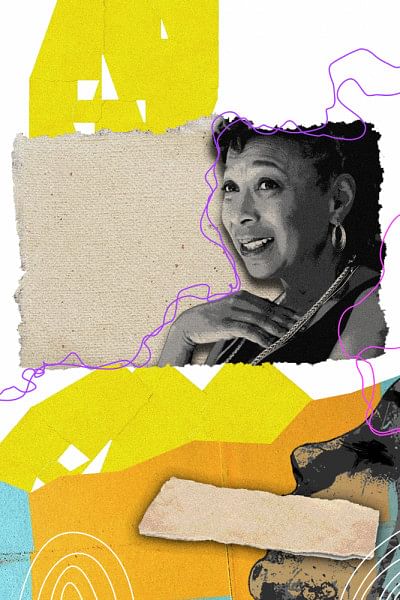
THE REASONS FOR THE FOCUS ON INDIVIDUALS
Despite overwhelming evidence of the structural production of violence, it is important to assess why the perception of violence remains individualised. For every articulation of the structures as the culprits that produce violence, there is a deluge of research and activism and policies and interventions that focus on individuals. There are several reasons for this.
One, the inevitable maintenance of violence in women's lives, exacerbated by social conditions such as the Covid-19 pandemic, propels researchers and activists to innovate ways in which support and treatment for women experiencing violence can be created instead of innovating in the realm of intervention work that treat the producers of violence. Two, the many different ways in which women's lives are affected by violence manifest in ways that require further redress. The consequences of violence create new avenues of oppression that require amelioration (for example, PTSD and other mental health outcomes) which means, there is a need for individual-level interventions to ameliorate the harm that violence causes that take away from redressing violence itself.
Three, neoliberalism and the rolling back of the social welfare state have ensured funds to tackle social problems such as violence are extremely low. Four, anti-violence' works appeal as a "helping" field, ripe for saviours, ensured the depoliticisation of anti-violence movements that turned into non-profit organisations and agencies that employ social workers with graduate degrees, diminishing the grassroots model of anti-violence work that included members from minoritised communities, and importantly, women who themselves had experiences of violence.
Five, amid a limited-funding situation created by austerity measures, scholars and practitioners have had to pick between violence intervention and violence prevention work. In an ideal world, scholars and activists would have the resources to do both. When there are few resources to avail, and suffering from violence is constant and ongoing, the limited resources invariably go to intervention work, as it perhaps should.
Suffice to say, the focus on individual interventions that structure, govern, and monitor behaviours of individuals implicated in violence obscures the link between the structural and personal, thus maintaining the problem of violence while contributing (again) to the depoliticisation of anti-violence work.
But this, too, needs to be seen in context. In an op-ed a few years ago, I had demanded the criminalisation of marital rape in Bangladesh—and I still do, until we have another system of justice in place, one that does not reproduce the same problems that we see today. I did it not because I want police intervention in the bedroom and through the courts but because in a culture where the difference between sex and sexual violence remains a location of contention, harmful behaviours such as rape are often seen to be aligned with heteronormative, heterosexual, and patriarchal mores that continue to govern intimate relationships. In Bangladesh, like elsewhere, laws set the rules and norms that govern people, and without laws that see marital rape as a crime, the problem continues without redress. At the same time, however, that contextual reading falls right into the hands of the criminal justice system that would indict individuals, not rehabilitate them, and remains a problem that we need to contend with. Until we have a restorative and transformative form of justice where harm is recognised, and purveyors of violence take responsibility for their actions and make efforts to rectify their mistakes, we are stuck with the very system that is a site of sexual violence for many.
Neoliberalism is not just policy; it is an ideology—violence intervention on an individual level is in line with the individualised logic of neoliberalism, which propagates the notion of violence, particularly sexual violence, as linked to behaviours of individuals who are violated. Under such norms, women are convinced that they can prevent violence against their own bodies with the right tools and resources, becoming civilising agents of their own bodies. When skills-based interventions target women with the promise to "fix" the problem of violence, the structural forces that keep women from reaching that goal of living a life free from violence are mystified, even invisibilised. At the same time, the neoliberal ideology of personal responsibility ensures that women are blamed for their failure to protect themselves.
HOW ACTIVISTS (CAN) BECOME COMPLICIT
Global capitalism is in the business of producing "synthesised" and unified messages, camouflaged as personal opinions, research, public interest, and so on. To show how activists (can) become complicit in this, I draw from an example that comes from Bangladesh, where anti-violence work happens primarily in NGO-based activist circles and is part of corporate social responsibility (of corporations). I appreciate the pluralist approach to raising awareness about violence—the more players, the better. However, I pause when seemingly helpful activists inadvertently dehumanise the very women they advocate for, when women are depicted as individually responsible for their own experiences of violence. I highlight one case because moments such as these can be powerful in their ability to show how women's experiences of violence are socially depicted and understood.
It is an artwork by indigenous artist Tufan (found on his public Facebook page Tufan's Artbin) shared by NGO-based activists in support of women who experience rape. The artwork depicts the faceless body of an indigenous woman. It is presumably meant to draw attention to the highly prevalent but neglected problem of rape of indigenous women by members of settler communities and the Bangladesh military in the Chittagong Hill Tracts.
Tufan's jarring representation of a rape victim/survivor in his own community simultaneously shocks and normalises the idea of invisibility of indigenous women who experience rape. The face of the woman is completely erased, ostensibly by her rape, perhaps in shame. Her arm takes on chair-like attributes, making her seem static and immovable like furniture. It is accompanied by text attributed to Karin Slaughter that reduces women to a singular instance of violation, her rape, that overshadows not only the present but her future. The message is clear: once women experience rape, they are victims for life; anything else they do is colored through the lens of victimhood. This reading is also deterministic as it suggests that women, ruined by their experience of rape, have no hope for a better future, no room for growth; they are stagnant, forever stuck in their experience of violence.
Tufan's representation is not what I critique—he represents how rape victims are viewed in a system of militarism, patriarchy, colonialism, and capitalism at a time when the Chittagong Hill Tracts have become a profitable tourist destination that benefits the State. What I problematise is the uncritical view that activists inadvertently take and advance when they share artwork like this without pointing out where they stand. When shared by middle-class Muslim activists in Bangladesh, this artwork illustrates that which is under scrutiny—the idea that majoritarian Bengali Muslims do not see the plight of indigenous women, just like they do not see that Tufan's depiction is a critique of them. Further, it makes clear that a dehumanised view of victims and victimhood is widely accepted, which then justifies the oversight and neglect of this population. After all, if women who have been raped are beyond hope and change because of their experience of rape, there is no need to help them because they cannot be helped.
Tufan's artwork is instructive as a reminder that not much has changed in how women's experience of violence and rape, in particular, is seen since Bangladesh's early years. Much like the birangonas (the women who were raped during Bangladesh's War of Liberation and given this title as a way to acknowledge their sacrifice) confined to their homes as a way to manage their families' sense of shame and stigma—forever victims who are shut away, women who experience rape are reminded through messages like these—by activists no less that they lose their humanity when they experience rape. They are told to see themselves as eradicated. It creates and reinforces social norms that view women as weak, easily destructible. Rape, then, keeps asserting itself as a weapon of "war"—a weapon by which women can be annihilated, as needed.
Public perception of the kind of women who experience violence and what happens to them once they experience violence regulates and governs how women who experience violence see themselves. The denial of victimhood by women who experience violence signals how patriarchy intertwines with the neoliberal logic of personal responsibility to produce internalised and appropriated victim-blaming. Under this setting, to admit to experiencing violence (and oppression) becomes equivalent to assuming fault for said violence. If women do not apportion blame to themselves, it becomes imperative to take action against their partners—indeed, under neoliberal logic, that is the only option that "agentic" and empowered women have—even though that may compromise their ability to act in their self-interest because that decision is mired in another set of structural factors ranging from the economic to the social and cultural. For example, research shows that women at risk of experiencing housing insecurity are more likely to endure partner violence.
As researchers interested in seeing an end to the production of interpersonal violence, we must see this kind of individual empowerment—variously defined—for what it is: lacking. Indeed, any individual-level intervention not accompanied by social change does little to change how women are treated.
Further, the spectacularisation of sexual violence dilutes everyday forms of sexual violence by creating a bifurcation between sex and rape that glosses over what Nicola Gavey terms "unjust sex," or sex that is not wanted or desired but is still enacted for reasons other than sexual pleasure or desire. For example, "I just lie there while he finishes off," a research participant from one of my research projects told me to describe her sexual relationship with a partner, a refrain that many of us who study interpersonal violence have invariably heard before. This quote acts as a reminder that heterosexual sex is a location of discontent for many women. Unpleasurable sex may not rise to the level of a crime, but there is a veneer of coercion that such sex contains, stemming from relational pressure on women to perform, even minimally, in the bedroom. Indeed, "bad sex" is a political issue that speaks to who is deserving of pleasure and who is not, embedded in structural inequalities. At the same time, that does not mean women are pitiful victims of crime.
However, in a global culture of patriarchy, many young girls learn about sexual violence before they learn about sex, which means that the two are intimately connected in the embodied experiences of girls, whether or not feminists approve of it. As scholars and activists, it is imperative that we talk about the line between (pleasurable) sex and sexual violence, and the gray area that takes up much of that line that constitutes unjust sex.
Crime is not a neutral concept. It is a word created by the criminal justice system that views violence as very specific acts which are considered crimes only when certain parameters are registered under certain circumstances. It infrequently encompasses the whole range of violence that women experience. It almost always requires that someone else witnesses it. It does not have room for forms of violence that are hidden, such as intimidation or threats of violence. Indeed, the criminal justice system cannot assess what constitutes versus what appears to be unjust when all it aims to do is prosecute—that system cannot be the adjudicator of the extent of violation and harm that people experience and the kind of justice that harmed individuals might want. Sex can be a location of social harm, even if it is not a location of physical or sexual harm for women. Let me explain.
Nonmarital sex is highly prevalent in Bangladesh, often contingent upon marital commitment. Nonmarital sex, however, gets conceptualised as rape by women when the marital commitment is broken because of puritanical ideas of women's sexuality, and what they do with their bodies undergirds the conceptualisation of a "good girl". Meanwhile, a culture of impunity surrounds rape trials and sexual violence in Bangladesh. Because men are infrequently implicated in the criminal justice system for committing sexual violence, the invocation of rape to register betrayal is an interesting and agentic cultural production that draws attention to women's experience of treachery. The terming of betrayal sex as rape records their protest, but without causing actual harm to the men they implicate, given that such forms of "rape" are difficult to prove and do not rise to the level of crime. This concept of betrayal as rape is an agentic moment in which women effectively manage their reputation, respectability, and sexuality, which we know, are of great importance to women, their families, and their communities. So, when women invoke rape to talk about betrayal experienced in their sexual relationships—which is a form of social harm, they call attention to the unjust manner in which sex was procured from them instead of waiting for their male partners to protect and save them by actually marrying them. However, not all women are able to be agentic. Many young individuals are forced to marry once they are found fornicating, even though these "forced" marriages rarely last very long.
Betrayal sex and the potential for forced marriage should be contrasted with another form of forced marriage: when unmarried women and girls are forced to marry their rapists for similar reasons: to manage the respectability of women and girls who are raped and that of their families. In Bangladesh, marital rape is within the rights of men, which is why marrying the rapist removes the stigma that comes with being a known practitioner of nonmarital "sex." Indeed, respectability politics in the domain of sexuality is one of the reasons for which "justice" for some women involves getting married to their rapists, while it becomes clear how sex and rape are conflated.
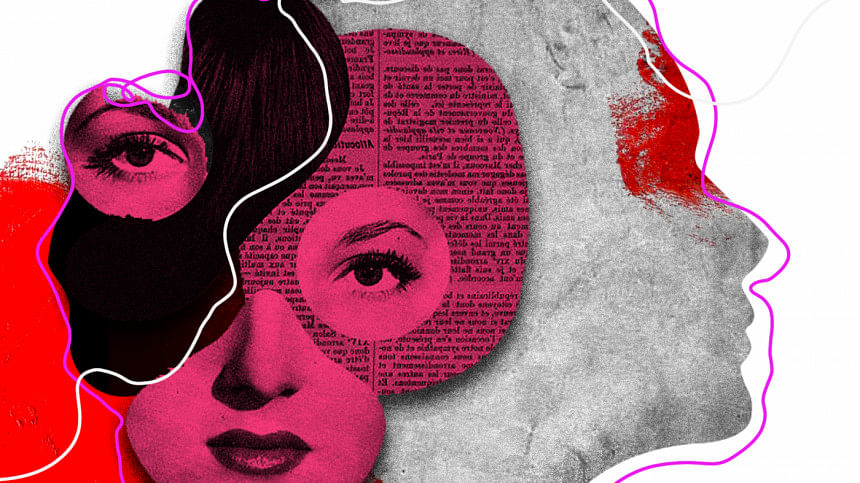
BANGLADESH: THE BIGGER PICTURE
To provide an understanding of the conditions under which activism and research on violence take place, let me introduce the contentious issue of the "Bangladesh paradox", which entails high growth rates amid inequality, NGO-led empowerment amid violence, parity in girls' education in terms of gender-based discrimination that work to maintain the systems of colonialism, capitalism, patriarchy, and global racism, that pave the way for social control over neoliberal subjects. I forward, it is the empowerment rhetoric that hides violence, which then makes violence appear as aberrant, individual acts; it's the high growth rates that hide deepening inequality, it's the gender parity in primary education that hides how girls often drop out of school after they hit puberty. These paradoxes then appear to be a way to marginalise the problems that affect marginalised groups. These "positive framings" are actually moments of depoliticisation.
For example, empowerment, "produced" by NGOs (which are perhaps the most prominent location of feminists and gender activists in Bangladesh), has become increasingly depoliticised as they are accountable to foreign donors and their mandates. Indeed, neoliberalism-led NGOisation recreated a kind of empowerment that is no longer about having agency or power, as much as it is about thinking and feeling that one has agency, self-efficacy, and self-sufficiency; not as much about changing the systems, as it is about enhancing skills and literacy, changing behaviours, and learning new trades. It is not about enhancing political participation but keeping the citizenry so engaged in neoliberal projects, turning them into consumers, that they have no time to build solidarity with others. It is not about deepening capabilities by strengthening institutions and the ability of citizens to access those institutions, which could perhaps include educational components, but about responsiblising individuals to become their own "change agents," as if they can better their lives just by enhancing themselves. In other words, all it takes to empower women is for NGOs and corporations to create a product line for them, the consumption of which automatically empowers them and gets categorized as such.
WHAT NEXT?
The analyses presented highlight the context in which knowledge production related to violence takes place. The solution to the problem of violence has become stagnant with interventions aimed at individual-level "empowerment" of women. As researchers interested in seeing an end to the production of interpersonal violence, we must see this kind of individual empowerment—variously defined—for what it is: lacking. Indeed, any individual-level intervention not accompanied by social change does little to change how women are treated. When scholars and practitioners forward individual treatment programmes or interventions to ameliorate violence, they inadvertently blame women who experience them. This happens because interventions aimed at fixing women are seen as fixes to the problem of violence, obscuring how partner violence is produced in the first place—by the interlocking systems of global racism, patriarchy, and neoliberalism intertwined with cultural mores. That intervention work is not accompanied by structural change is exactly what maintains violence across the lifespan.
As scholar-activists, we need to recognise the many ways in which oppression and interpersonal violence are structurally produced, be careful not to be used to do the harmful work of obscuring the link between the structural and personal, and blaming individuals for the various forms of violence they experience. We need to re-imagine a world in which the systems that produce violence are dismantled, where relationships are egalitarian, where hierarchies no longer exist. We are not bound by anything other than our will to create an equal, equitable, and just society. Finally, we need to have radical responsibility, not just compassion, for the people and communities we work with. We not only need an ethical way to conduct research in the way Institutional Review Boards intend, but we must cultivate a kind of personal and academic ethics that will ensure that we use trauma-informed, racially just, and community-engaged research, not only the (neoliberal kind of) research we need to do to get tenure and promotion or otherwise serve personal or career-related interests. As ethical researchers, we must sit, as uncomfortably as it may be, with the power dynamics that put researchers in a position of power which we must work to mitigate and the saviour-complex that drives "helping" minoritised communities and individuals, instead of unleashing them on the communities we study.
Nadine Shaanta Murshid is associate professor at the School of Social Work in the University at Buffalo, US.

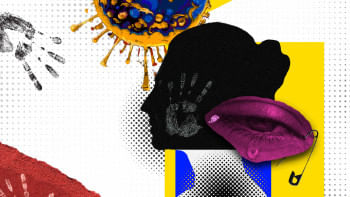
 For all latest news, follow The Daily Star's Google News channel.
For all latest news, follow The Daily Star's Google News channel. 
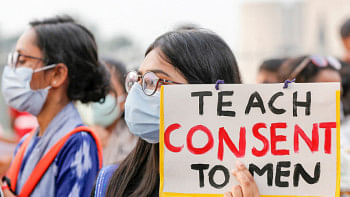

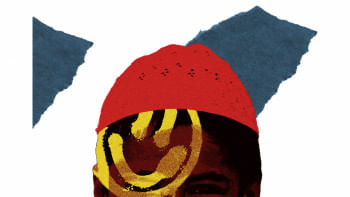




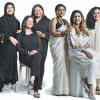





Comments